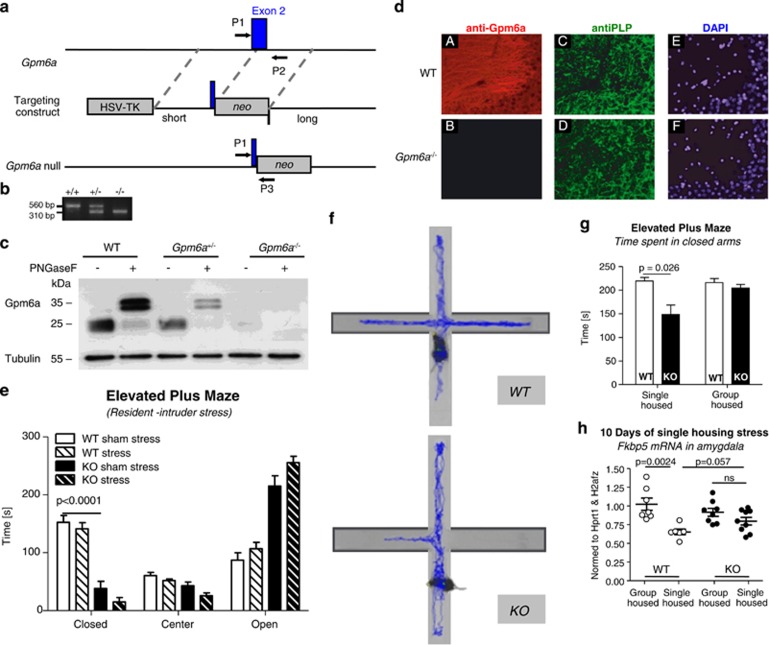Figure 1.
Generation of Gpm6a null mutant mice and discovery of behavioral consequences following stress. (a) Strategy to inactivate the mouse Gpm6a gene. A neomycin resistance cassette flanked by translation stop codons in all reading frames was fused into exon 2, which is the first exon present in all Gpm6a transcripts. (b) PCR genotyping to identify wild-type (WT) and mutant Gpm6a alleles. (c) Immunoblot analysis of cortex homogenates using antibodies directed against Gpm6a or tubulin, with or without prior deglycosylation using PNGaseF. Gpm6a was undetectable in Gpm6a null mutants. Note that the abundance of Gpm6a was considerably reduced in heterozygous mice. (d) Immunohistochemistry of brain sections with antibodies directed against Gpm6a or the related proteolipid protein (PLP). Note that Gpm6a was not detected in Gpm6a null mutant mice that showed unchanged PLP expression. (e) Elevated plus maze (EPM) behavior of psychosocially stressed (resident-intruder paradigm) as well as of sham-stressed Gpm6a null mutants (KO) reveals a prominent claustrophobia-like phenotype (N=17–19 per group). (f) Sample track recording of EPM performance, illustrating a Gpm6a mutant spending much less time in closed arms compared with its WT littermate. (g) Single housing (a prerequisite of performing the resident-intruder stress) is sufficient to induce a claustrophobia-like phenotype in Gpm6a mutants (N=7–9 per group), which is absent upon group housing, and (f) to reveal a clear genotype difference in the expression of a stress-regulated gene, Fkbp5, in mouse amygdala (N=7–9 per group). Mean±s.e.m. presented. DAPI, 4′-6-diamidino-2-phenylindole; HSK-tk, herpes simplex virus-thymidine kinase.

